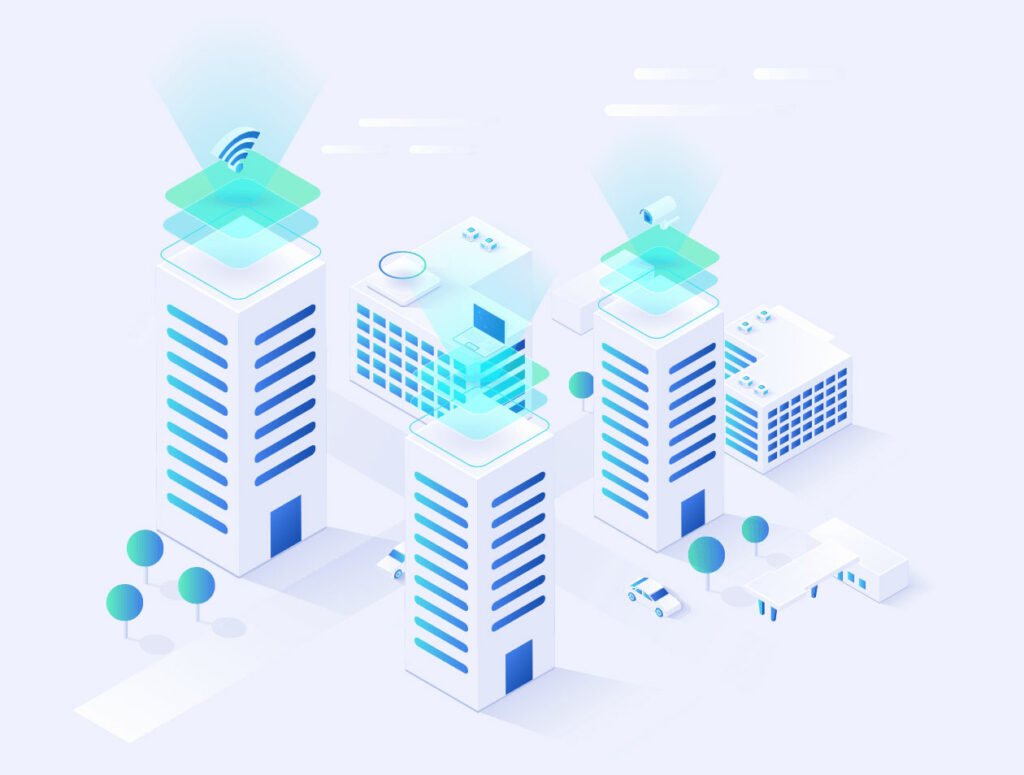Table of Contents
1. Introduction
2. Airbnb: Enhancing Travel Experiences with Data-Driven Insights
3. Netflix: Revolutionizing Content with Data Analytics
4. Amazon: Transforming Retail with Predictive Analytics
5. Spotify: Mastering Music Recommendations with BI
6. Coca-Cola: Leveraging Social Media Insights
7. Starbucks: Digital Integration and Customer Engagement
8. Chipotle: Standardizing Operations and Enhancing Efficiency
9. REI: Customer Segmentation for Targeted Marketing
10. Tesla: Data-Driven Automotive Innovation
11. Twitter: Enhancing Platform Safety and User Experience
12. Uber: Dynamic Pricing and Operational Efficiency
13. The Future of BI: Trends and Tools


In today’s dynamic business landscape, the role of Business Intelligence (BI) is constantly evolving and becoming increasingly crucial. This article explores various case studies that highlight the transformative power and diverse applications of BI across different industries. Each example demonstrates that BI services go beyond data analysis; they are integral to enhancing user experiences, boosting operational efficiency, and driving innovation.
1. **Airbnb: Enhancing Travel Experiences with Data-Driven Insights**
Airbnb’s innovative use of BI showcases how understanding customer needs through data can revolutionize a business model. Initially focused on providing accommodations, Airbnb discovered a unique opportunity to expand its services beyond just places to stay. By analyzing user data, they identified travelers’ desires for more immersive experiences in their destinations.
– **Expansion into Experiences**: Airbnb introduced ‘Experiences,’ allowing travelers to book activities and events curated by locals, based on insights from user data indicating a demand for more than just accommodation.
– **Adapting to Long-term Stays**: Further data analysis revealed a growing demand for longer-term rentals. Airbnb responded by adapting their platform to cater to this market segment, offering more flexible booking options for extended stays.
– **Customized Travel Solutions**: BI has enabled Airbnb to become more than a lodging service; it’s now a comprehensive travel solution offering personalized recommendations, making each trip unique and memorable.
2. **Netflix: Revolutionizing Content with Data Analytics**
Netflix’s success is deeply rooted in its adept use of BI to create a highly personalized viewing experience and inform its content creation strategy.
– **Personalized Recommendations**: Netflix uses sophisticated algorithms to analyze viewing patterns and preferences, providing personalized show and movie recommendations. This keeps viewers engaged, reducing churn and enhancing the user experience.
– **Data-Driven Content Creation**: The production of hit series like ‘Stranger Things’ was influenced by data insights. Netflix identified a viewer interest in ’80s nostalgia and supernatural themes, leading to content that resonated with a large audience segment.
– **Global Expansion Strategy**: Netflix’s expansion into various international markets was guided by BI. By understanding regional viewing preferences, they tailored content for different audiences, broadening their global reach.
3. **Amazon: Transforming Retail with Predictive Analytics**
Amazon’s application of BI in retail has set a new standard for customer experience and operational efficiency.
– **Predictive Product Recommendations**: Amazon’s recommendation system analyzes past purchase behavior and browsing history to predict products customers are likely to buy, making shopping easier and more personalized.
– **Inventory Management and Forecasting**: BI helps Amazon forecast demand, ensuring popular items are well-stocked. This level of inventory optimization reduces the risk of stockouts and overstocking, leading to cost savings and improved customer satisfaction.
– **Enhanced Shopping Experience**: Beyond recommendations, Amazon optimizes every aspect of the customer journey, from search functionality to the checkout process, ensuring a seamless shopping experience.
4. **Spotify: Mastering Music Recommendations with BI**
Spotify’s application of BI and data analytics sets a high standard for personalized user experiences in the music streaming industry.
– **Advanced Suggested Listening Algorithms**: Spotify’s recommendation system is renowned for its precision. By aggregating vast amounts of user listening data and employing powerful BI tools, the platform suggests songs, artists, and playlists that align with users’ musical tastes.
– **Personalized Playlists**: The platform generates unique playlists for listeners, such as ‘Discover Weekly’ and ‘Year in Review’. This level of personalization keeps users engaged and enhances their overall listening experience.
– **Market Dominance Through Personalization**: Spotify’s use of BI in curating music experiences has significantly contributed to its market dominance, understanding and predicting user preferences to remain a favorite among music enthusiasts worldwide.
5. **Coca-Cola: Leveraging Social Media Insights**
Coca-Cola’s strategic use of social media data, powered by BI, demonstrates the company’s innovative approach to marketing and consumer engagement.
– **Social Media Data Analysis**: Coca-Cola analyzes data from social media platforms to gain insights into consumer behavior, preferences, and demographic trends, shaping effective marketing campaigns.
– **Engagement and Brand Presence**: By leveraging BI tools, Coca-Cola tracks and enhances its engagement with consumers on social media, maintaining a strong online presence and brand identity.
– **AI-Enhanced Insights**: The integration of AI with BI allows Coca-Cola to recognize when its products are featured in social media posts, providing further insights into consumer behavior and preferences.
6. **Starbucks: Digital Integration and Customer Engagement**
Starbucks’ use of BI, especially through its loyalty program and mobile app, is an exemplary case of digital integration enhancing customer engagement and business performance.
– **Loyalty Program Insights**: Starbucks leverages data from its loyalty card program and mobile app to understand and predict customer purchasing behaviors, informing personalized marketing strategies that increase customer visits and sales.
– **Mobile App as a Revenue Channel**: The Starbucks mobile app, integrated with the loyalty program, allows customers to pre-order, pay, and collect rewards. This digital innovation, backed by BI, has transformed Starbucks into a digital payments leader in retail.
– **Financial Benefits and Customer Retention**: Data from digital channels enables Starbucks to create targeted and personalized offers, improving customer retention and increasing the average spend per visit.
7. **Chipotle: Standardizing Operations and Enhancing Efficiency**
Chipotle’s adoption of BI solutions across its chain of restaurants showcases the impact of BI in standardizing operations and enhancing overall efficiency.
– **Operational Efficiency Monitoring**: By utilizing BI dashboards, Chipotle monitors the operational efficiency of each location, tracking key performance indicators (KPIs) to swiftly identify and correct operational issues.
– **Centralized Data Ecosystem**: Centralizing their data ecosystem enables Chipotle to create uniform KPIs across all locations, aiding in consistent reporting and decision-making processes.
– **Performance Benchmarking**: BI tools allow Chipotle to identify high-performing stores and share successful strategies across the brand, fostering continual improvement and best practice sharing.
8. **REI: Customer Segmentation for Targeted Marketing**
REI’s application of BI in customer segmentation exemplifies how data can be used for refined marketing and product strategies.
– **Segmentation Analysis**: REI uses its BI platform for advanced customer segmentation, enabling tailored marketing strategies by analyzing member lifecycles, preferences, and demographics.
– **Informed Decision Making**: Insights from BI guide REI’s decisions on shipping methods, product assortments, and member acquisition initiatives, ensuring marketing and operational decisions align with customer needs.
– **Personalized Member Engagement**: Data aids in personalizing website content and segmenting email campaigns, enhancing overall customer experience and engagement.
9. **Tesla: Data-Driven Automotive Innovation**
Tesla’s use of BI for vehicle monitoring and improvement demonstrates the integration of data analytics in product development and customer service.
– **Wireless Car Data Analysis**: Tesla’s vehicles are wirelessly connected to corporate offices, allowing for data collection and analysis to anticipate and correct problems, ensuring high customer satisfaction.
– **Proactive Maintenance and Upgrades**: By analyzing collected data, Tesla proactively addresses component issues and informs customers of necessary maintenance or updates, enhancing vehicle longevity and performance.
– **Customer-Centric Product Development**: Collected data informs Tesla’s decisions on future upgrades and product developments, ensuring vehicles continually evolve to meet customer needs and preferences.
10. **Twitter: Enhancing Platform Safety and User Experience**
Twitter’s deployment of BI and AI showcases how technology can be used to maintain platform integrity and improve user experience.
– **Content Moderation with AI**: A significant portion of Twitter’s content moderation, especially for identifying terrorism-related accounts, is powered by AI and BI algorithms, enhancing platform safety.
– **User Experience Optimization**: Twitter’s BI tools monitor live video feeds and categorize them based on subject matter, improving search capabilities and suggesting relevant content to users, personalizing the user experience.
– **Real-time Data Analysis**: The integration of BI and AI enables Twitter to fine-tune its platform in real-time, ensuring a responsive and relevant user experience.
11. **Uber: Dynamic Pricing and Operational Efficiency**
Uber’s use of BI for dynamic pricing and operational management is a prime example of real-time data application in the service industry.
– **Surge Pricing Algorithm**: Uber employs BI algorithms to monitor factors like traffic conditions, driver availability, and customer demand in real-time, adjusting prices based on these factors to optimize the balance between supply and demand.
– **Operational Decision Making**: Insights from BI help Uber make strategic operational decisions, such as deploying drivers in high-demand areas and optimizing routes for efficiency.
– **Market Adaptation and Expansion**: Uber’s BI tools play a critical role in their expansion strategy, helping them understand and adapt to different market dynamics and customer preferences.
These case studies from Airbnb, Netflix, Amazon, Spotify, Coca-Cola, Starbucks, Chipotle, REI, Tesla, Twitter, and Uber illustrate the diverse and impactful ways in which BI is employed across various industries. From enhancing customer engagement and personalization to improving operational efficiencies and ensuring platform safety, these examples underscore the transformative potential of BI in modern business practices.
**The Future of BI: Trends and Tools**
The evolution of BI is marked by trends like AI integration, cloud analytics, collaborative BI, and embedded BI. These advancements are making BI more accessible and impactful across various sectors. Tools like predictive modeling, data mining, and OLAP are pivotal in extracting valuable insights from data.


